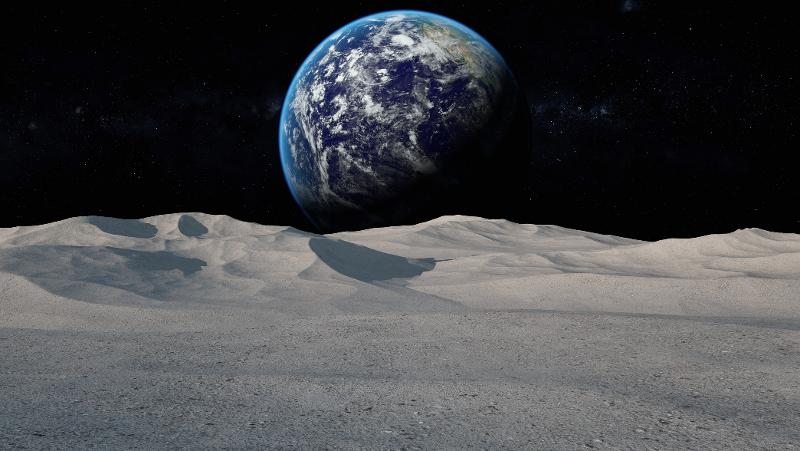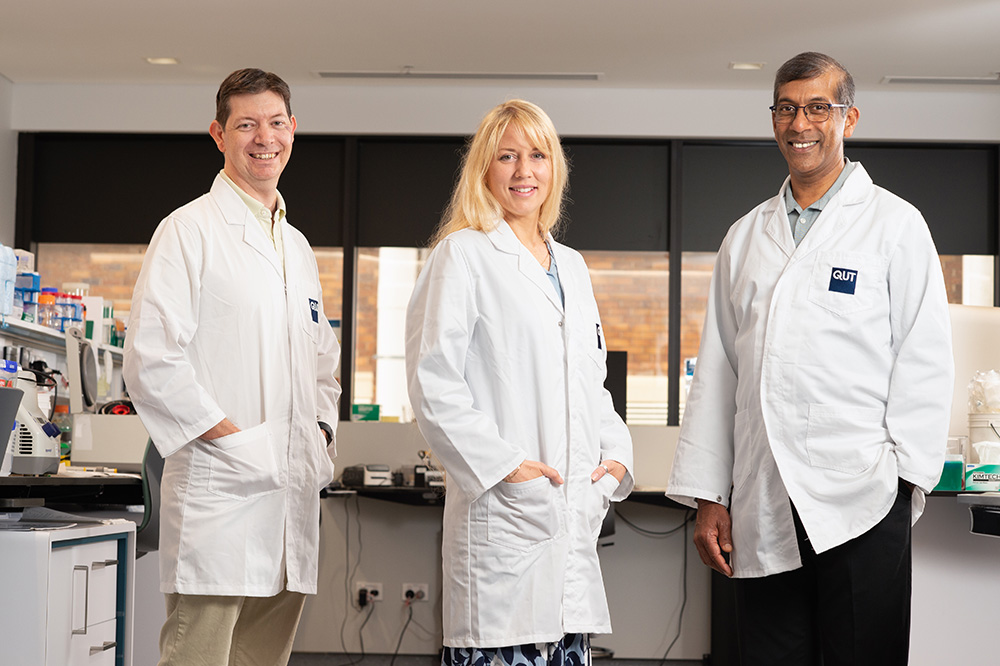
An Australian space start-up will experiment with growing plants on the moon by sending a capsule containing carefully selected seeds and ‘resurrection’ plants, along with sensors, a camera and water on a commercial lunar lander travelling to the moon in 2024.
- A specialised capsule designed to carry seeds and plants, such as Australian hardy native ‘resurrection grass’, to the moon
- Once it has arrived on the lunar surface the capsule will release water to germinate the seeds and ‘revive’ the resurrection plants
- A camera and sensors in the capsule will record the plants’ response
The start-up, Lunaria One, is led by QUT researcher Lauren Fell, from QUT School of Information Systems, in collaboration with RMIT in Melbourne, the ANU in Canberra, and Israeli organisation SpaceIL whose spacecraft Beresheet 2 will carry Lunaria One’s plant capsule to the moon.

(From left: Dr Brett Williams, Lauren Fell, Professor Sagadevan Mundree)
Ms Fell said the payload proposed by Lunaria One would be the first in a series of experiments to investigate if plants could survive and thrive on the lunar surface.
“We have an expert team of biologists, engineers and educators in our team as we will invite citizen scientists from around the world to participate in solving the unique challenges in this project,” Ms Fell, said.
“The cameras and sensors in the container will provide data on plant growth and health that we can compare with our control experiments here on Earth and make available on our website along with data from participating schools and universities.”
Ms Fell said the project was the first step towards the goal of growing plants for food, medicine, oxygen production, for future astronauts living on the moon and beyond, as well as learn new ways to maximise sustainable food production here on Earth.
QUT plant biologist Dr Brett Williams, from QUT School of Biology and Environmental Science, said Tripogon loliiformis, one of the species considered for the payload, is an Australian native resurrection grass that survives for months without water in harsh conditions and revives as soon as it receives water.
“Even after losing more than 95 per cent of its relative water content, the dead-looking grass remains alive and pre-existing tissues flourish when provided with water,” Dr Williams said.
“The seeds and resurrection plants can survive in a dehydrated dormant state and will be carried in a hermetically sealed chamber on the lunar lander and, we hope, germinate and reactivate upon watering.”
QUT agricultural biotechnologist expert Professor Sagadevan Mundree, director of QUT’s Centre for Agriculture and the Bioeconomy, said the resurrection plant suppresses flowering when drying out.
“Once it is watered and has rehydrated itself the plant ‘makes hay while the sunshines’ and quickly seeds and flowers so we will gain important information about plants’ ability to survive and thrive from this experiment.”
The projects science advisor Associate Professor Caitlin Byrt from ANU said plant propagation was critical for food security on Earth and in space.
“Space is an exceptional testing ground for how to propagate plants in the most extreme of environments,” she said.
“Our planet is facing extreme conditions from climate change which present challenges for how we manage future food security. We need to be creative and pioneering in how we manage to propagate plants to prosper.”
Media contact:
Niki Widdowson, QUT Media, 07 3138 2999, n.widdowson@qut.edu.au
After hours: 0407 585 901, media@qut.edu.au




